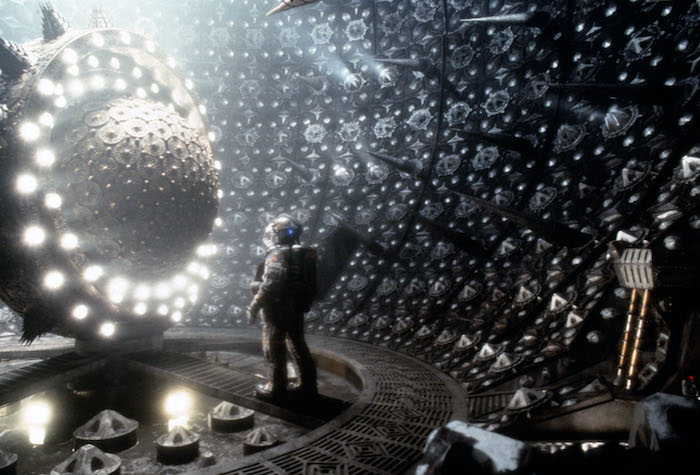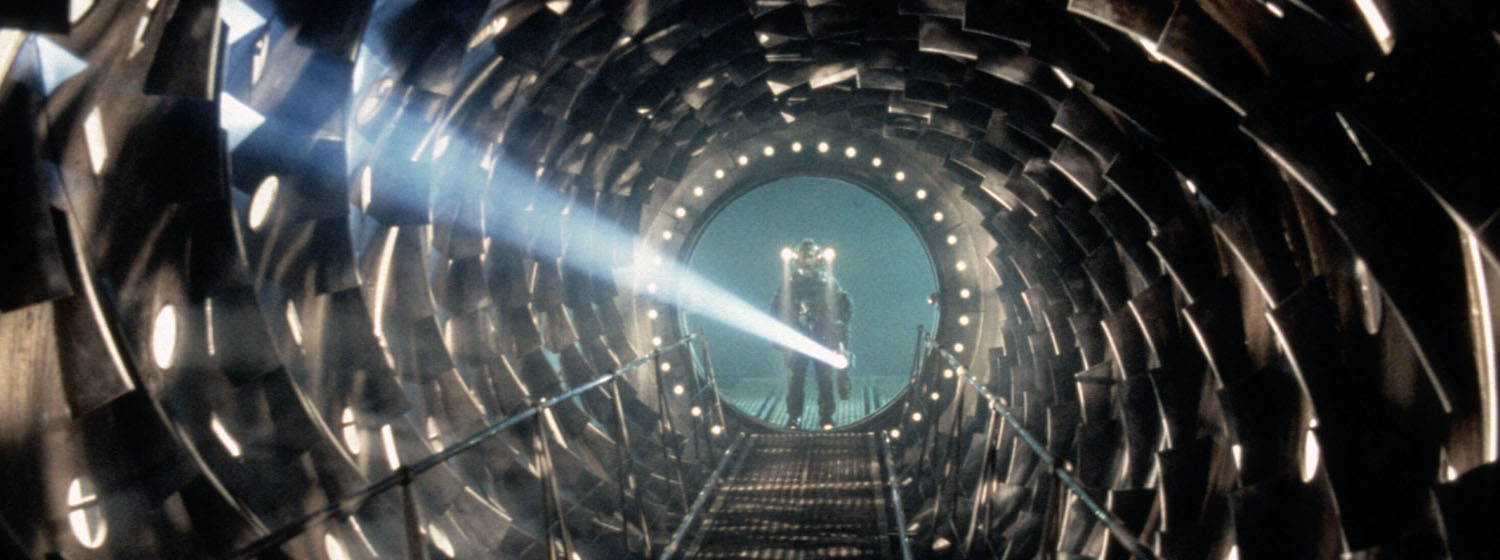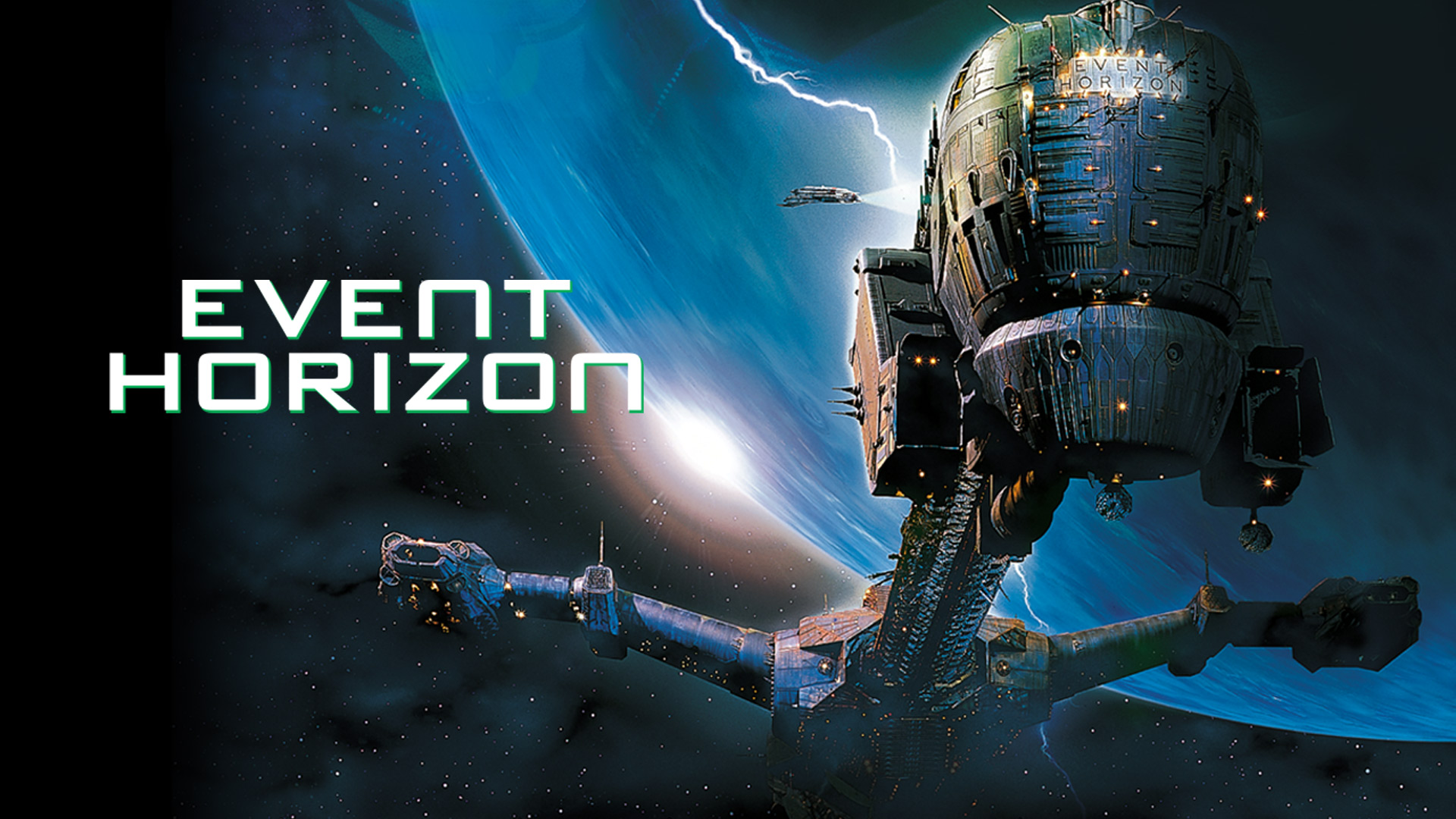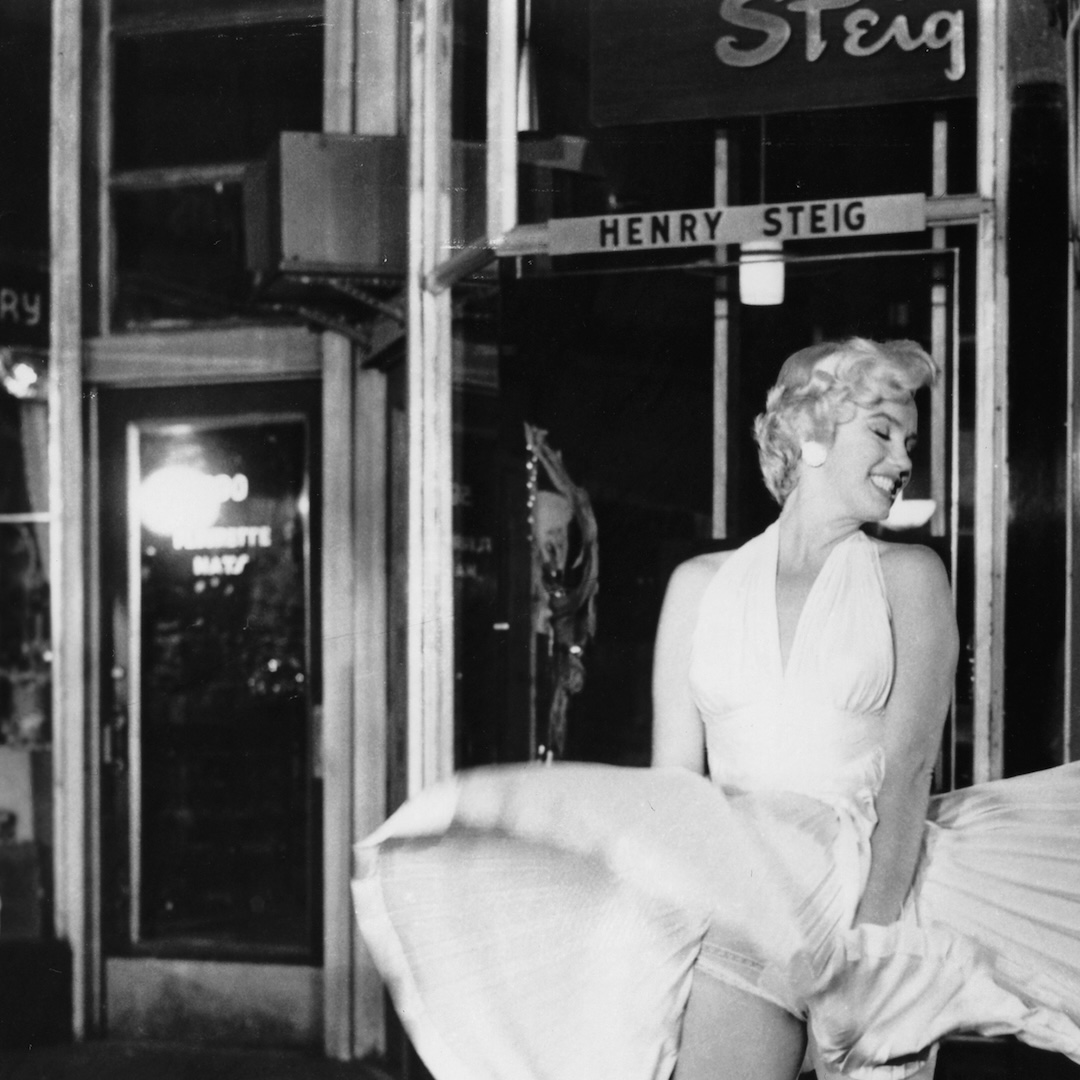When Hell Becomes the Final Frontier: Paul W.S. Anderson’s Event Horizon
October 15, 2020 By Go BackThere’s no doubt Paul W.S. Anderson is a genre fan. One needs only to look at his library of films to see that. He broke out with his first big box office success by directing the video game film adaptation Mortal Kombat in 1995. He would go on to make the Resident Evil franchise, Death Race and Alien vs. Predator, and the next video game film adaptation, Monster Hunter, due out this year. His 1997 film Event Horizon was the third film he directed and went for the genre hybrid of horror/sci-fi with some ultimate gore scenes he desperately craved after the 14-A rated Mortal Kombat. It’s a film chock-full of stellar actors, excellent horror references, and it’s just loads of fun. Who wouldn’t want to watch a space crew succumb to a hell dimension?
In this cult space madness gem, Captain Miller (Laurence Fishburne) heads the salvage ship Lewis Clark’s crew, plus scientist Dr. Weir (Sam Neill), on a recovery mission to find the Event Horizon in the year 2047. Disappearing beyond Neptune, the spacecraft Weir designed has suddenly reappeared in the farthest reaches of the universe after seven years. He built the ship’s core, a rotating magnetic field, to open a dimensional gateway and an artificial black hole for faster than light travel. Once the craft returns, he must figure out what happened to it and why it disappeared. Risking life and limb, the crew soon learn that the Event Horizon has opened a portal of hellish proportions.
I’ve seen Event Horizon several times to catch all the horror references, but each time I watch it, I marvel at how gorgeous it is. Anderson is known for excellent production value on a budget, like in Alien vs. Predator, where intricate sculptures of the Predator’s alien culture graced the tunnels of a deadly pyramid. In Event Horizon, the set design boasts a ship based on the Notre Dame cathedral. The rest of the spacecraft mimics not only the iconic French church (and maybe a xenomorph), but gothic, medieval dungeons with a little bit of the Lament Configuration box from Clive Barker’s Hellraiser (1987) thrown in. It’s a fantastic way to juxtapose good and evil visually, and that backdrop becomes more relevant as the film progresses. There’s also scoring by electronic band Orbital and a theme song by The Prodigy that earmarks the movie in a specific time and space for electronic music lovers.

According to Anderson, he was inspired by two horror classics, the 1963 film The Haunting and Stanley Kubrick’s The Shining (1980). He wanted a haunted house film in space and used elements from each classic that translates surprisingly well. Select details like sound design, a wave of blood engulfing the crew, and even a grungy Alien-esque interior show Anderson’s homage to classic horror and sci-fi. There is also disturbing imagery of blood-soaked orgies/murders that blur the pain and pleasure thresholds. Anderson really went for the horrific coming off of his previous films, but some footage was left on the cutting room floor because those scenes were too gory. Unfortunately, we’ll never see them because they were irretrievably damaged.
Anderson cast an excellent ensemble of genre all-stars in Event Horizon. Sam Neill, Laurence Fishburne, and Sean Pertwee are genre kings with films like Possession (1981), Dog Soldiers (2002), and The Matrix (1999) (which Fishburne would do after Event Horizon) in their resumes. There’s also Richard T. Jones with his snappy retorts and Jason Isaacs, who is grossly underrated and would go on to play some quintessential bad guy roles, like Dr. Volmer in A Cure for Wellness (2016). Kathleen Quinlan and Joely Richardson round out the cast for some tough but feminine representation.

Event Horizon inspires theories many a critic and fan have expounded on. Even Lt. Starck, played by Richardson, has one. She tells Captain Miller she thinks the ship is alive. It seems to have a mind of its own, manipulating the crew with their tortured memories. There’s also the theory that this film is an extension of the Hellraiser universe. The murderous orgies, Dr. Weir’s possessed and mutilated body, and the things the ship wants to show the crew are all pretty spot on with Hellraiser lore. We also have the biggest clue of all, the ship’s core, which, just like Hellraiser’s Lament Configuration, opens a portal to Hell. Like Pinhead’s portal, it’s intricate, beautiful, and dangerous. Once the hypnotic rings of the core’s giant orb align, it’s on: The Hellmouth opens, and the devil comes to visit.
Could the Event Horizon be inside the Lament Configuration? It’s a compelling argument because the core almost feels like the box’s inner workings, and they could very well be inside it once they cross that threshold. They’re also plagued with regret as memories of their worst moments come to life as they fall under the ship’s spell. It is an actual lament they experience as the vessel feeds off the crew’s sorrow and guilt. Whatever the theory, the unfortunate space crew each experience their own version of Hell once they board the Event Horizon, and those who survive will carry a piece of it to blacken their hearts for eternity.
When you watch Event Horizon, remember that a dedicated video game/genre fan director made it. It’s a film made for fans by a fan, so we get a futuristic story steeped in traditional horror, with a haunted house in space. Enjoy this cult sci-fi/horror for the visuals, epic cast, and nods to the best horror films of our time.












 Follow us on Instagram
Follow us on Instagram